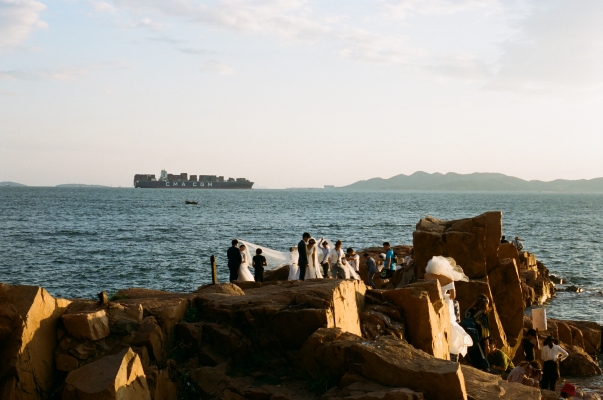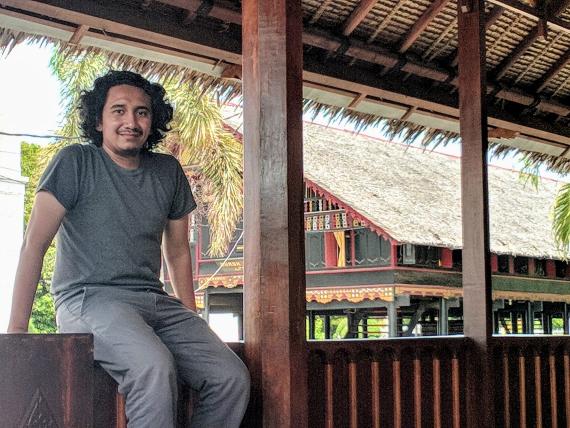Photo caption: Dimas Romadhon sitting on railing in Aceh, Indonesia
Before the COVID-19 pandemic began, medical anthropology doctoral student Dimas Iqbal Romadhon had already been studying infectious disease outbreaks and vaccinations in Indonesia. In fact, he spent the summer of 2019 in East Java and Aceh, Indonesia gathering ethnographic information about measles and rubella (MR) vaccine refusal. COVID-19 changed the whole landscape. Not only was Dimas unable to safely travel to Indonesia for his fieldwork, but attitudes towards vaccinations also shifted rapidly in his study communities — now more people were willing to get vaccinated. Dimas was left in the challenging position of needing to shift his research focus to continue making progress towards his degree. This challenge was exacerbated by the closure of funding opportunities for international students like Dimas.
To earn a living during summer 2020, Dimas took up employment as a food delivery gig worker for AmazonFlex and DoorDash. This experience opened his eyes to new research possibilities that were right in Seattle: How had people changed their lifestyles to prevent infection? How were contingent workers, like delivery drivers, underwriting these changes? Dimas has been pursuing these new research questions by interviewing delivery drivers and Amazon warehouse workers, conducting autoethnography of his own experiences as a food delivery driver and speaking with people to whom he makes deliveries. Ultimately, Dimas hopes that he can complete his dissertation research as a multi-sited ethnography that compares pandemic responses in Seattle and Aceh, Indonesia.
Hope St. John could sense in early February 2020 that the COVID-19 pandemic was going to significantly disrupt her dissertation research. Her field site was Qingdao, China, where she studied the localized photographic practice and place-making in the context of global urbanism. Much of her methodology involved interacting closely with her interlocutors as they went on photo shoots around Qingdao and conducting side-by-side photography. The intimate nature of her methodology, in addition to the suspension of most international travel to and from China, made her research untenable even before the United States shut down in March 2020.
After a long period of uncertainty during which she felt like she was not making much progress, Hope has emerged with a revamped and innovative dissertation project that makes use of digital, rather than in-person methods. Hope’s dissertation is now multi-sited and examines how similar experiences of globalized urbanism in Qingdao, Seattle, Vancouver, BC, and Hong Kong are filtered through the site-specific sociohistorical contexts and represented through localized photographic practice. To adapt to a digital social landscape, Hope draws on methods such as video interviews with photographers in each city, asking them to keep photo diaries, and conducting remote photoshoots with them (similar to how many pandemic-era magazine spreads were shot through Zoom). In addition, she has received a UW Simpson Center grant to further develop a method of time-space mapping, which involves tracing the movements of photographers through a city and noticing what they choose to photograph and what they do not capture. By putting a number of these maps together, Hope can get a better sense of how place is made, represented, and documented in these cities.
In this age of COVID, anthropological research is full of new uncertainties, but Dimas and Hope show us that uncertainty is also an opportunity for innovation.

Photo caption: Soon-to-be-married couples crowd onto a popular outcropping in near Qingdao's historic city center for wedding portraits as a French container ship arrives to port. Photo by Hope St. John, September 2018.
